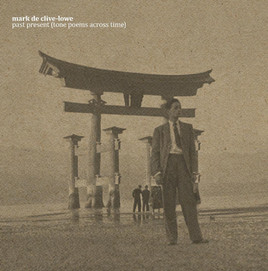Mark de Clive-Lowe: Time's ambivalent dance...
- by The Lioncub

- Apr 20
- 3 min read
When I heard Mark de Clive-Lowe's new album "Past Present (tone poems accross time)", it made me think of some of Czeslaw Niemen's compositions, especially those he crafted on his 1989 "Terra Deflorata" lp. I knew I had to meet Mark to talk about such a moving, and questionning, musical journey...
1) Hi Mark! Thanks for joining us here on the Balearic Breakfast blog! Your album makes a beautiful use of synthesizers and the way you were able to organise the layers is truly sublime as there is both depth (the bass parts are splendid) and latitude in the sonic experience you propose. Is it trickier to work solely with synthesizers ?
Thank you for such a thoughtful listen and for having me! Synthesizers offer a very different intimacy compared to acoustic instruments. They allow for the shaping of timbre and movement in ways that feel both tactile and ethereal. Working solely with synths can be tricky, yes—especially without the traditional scaffolding of rhythm or form. But that’s also what made it liberating.
I was able to follow textures, tones, and emotions without chasing structure. The depth and latitude you mention came from a kind of surrender—letting each piece unfold in its own way, sculpting sonic space as a meditative act.
2) On "Present past", the swirling effect of the synth allows silence to come into play adding a breathing effect into the tension. This constant duality represents the fights time has to overcome in order to exist. This track, to me, perfectly represents how sound and textures can help reveal the composers intellectual ideas, if they are any, conscious or unconscious. How did you approach composition while working on the album?
That track was built more like a meditation than a composition. When I started making this music, I didn’t have a narrative or intention—it was just exploration and expression.
Later, as I journeyed through Japan retracing my father’s footsteps, the music took on deeper resonance. “Present Past” became a mirror for my emotions—breathing, stillness, tension, release. The dualities you mention—presence and memory, silence and swirl—absolutely reflect how I was feeling, both consciously and unconsciously. It wasn’t about ideas in the intellectual sense but about trusting vibration to carry feeling.

3) There seems to be a constant lingering and questioning uncertainty in your album, even in the quieter tracks. Ironically, "Revelation" reveals that perfectly to the listener and allows him to feel it precisely at this moment of the album. In which mood were you when composing and would you agree with me if I told you I felt your album is a concept album?
You're right to sense that tension and questioning—it was a deeply emotional time for me, and that energy flows throughout the entire album. “Revelation" is the midpoint of the story, a moment of stillness and realization within the larger arc.
The album itself is very much a concept work: the sonic palette is intentionally unified, built around analog synthesizers, Fender Rhodes, CP-70 electric piano, and field recordings captured across Japan. These elements form a cohesive language to express the emotional terrain I was navigating—posthumous healing and reconciliation with my father. The track titles are deliberately spare, each one a distilled emotion or insight—acceptance, forgiveness, peace—marking stages in that journey. It wasn’t about adhering to form as much as following feeling and allowing the music to be a mirror.
4) The cover is another stunning and intriguing element and I feel there is a Strong message there too, something akin to the idea that we are our own equilibrium and that, somehow, we have to discover our hidden strength to be able to project it outside the world, then uniting in peace and eternity… can you tell us more about the place where the picture was taken?
That photo is actually of my father, taken in 1953, standing in front of the torii gate at Itsukushima Shrine on Miyajima Island, just off the coast of Hiroshima. It was low tide, just like when I visited again recently—nothing has changed.
The image holds such weight for me: it's both personal and timeless, symbolizing thresholds, reverence, and intention. Seeing him there as a young man, full of life and openness, helped me understand him in a new way. That photo encapsulates the album’s heart—honoring the past while finding meaning and presence in the now.
Thank you so much Mark!



















Comments